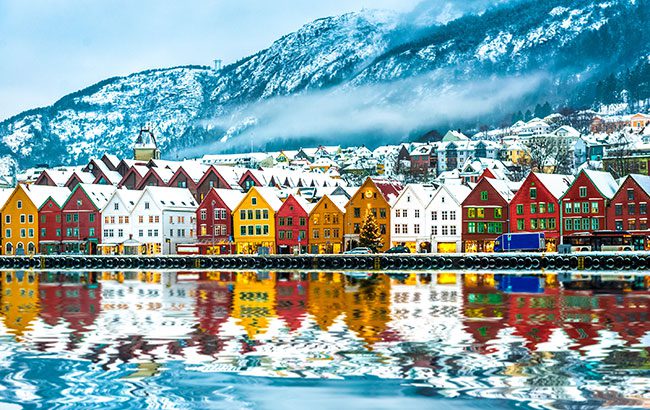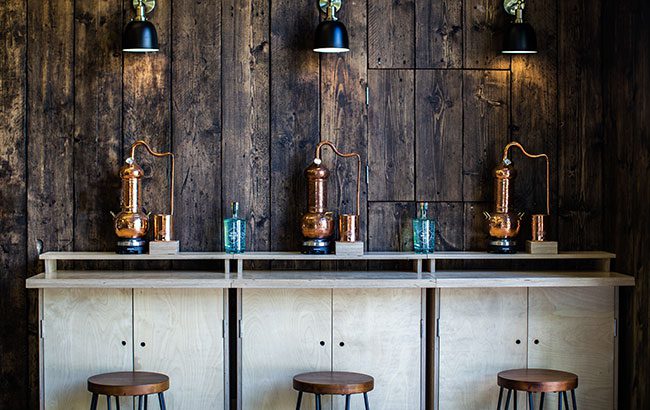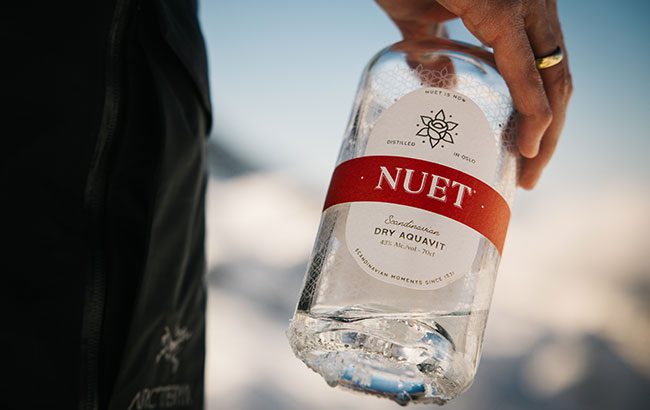Is aquavit about to go global?
Distillers around the world have seen the potential of Baltic hero aquavit, and are creating their own takes on the Scandinavian superstar. We spoke to producers in its heartland and abroad about the potential of the category.

*This feature was originally published in the December 2023 issue of The Spirits Business magazine.
Long established in its traditional heartlands of Norway, Sweden, and Denmark, aquavit has been regarded by locals as a well-loved spirit, often sipped neat during celebrations and suppers. But its international presence is expanding as aquavit has become adopted by other countries such as the US, the UK, France, and Canada, where local producers are putting their own twist on the Scandinavian spirit. According to Nordic drinks group Anora, there are now more aquavit microdistilleries in the US state of Oregon than in Denmark.
Fernanda Saldaña Rodríguez, market analyst, IWSR, says: “Aquavit is a very mature category, heavily linked to traditional occasions when consumers come together with families and friends, such as Christmas and Easter celebrations. This is the reason why the category gained momentum during lockdown in 2021 but returned to its long-term structural decline as the restrictions lifted and consumers returned to their regular activities.”
Globally, the aquavit category declined by a compound annual growth rate (CAGR) of 3% between 2017 and 2022, with a smaller dip of 1% predicted from 2022 to 2027, data from IWSR Drinks Market Analysis reveals. Out of its four main markets, Denmark, Germany, Norway, and Sweden, only Germany reported growth in the past five years (up by 6%, CAGR 2017-2022).
“Its largest consumer age group are older generations, and the general reduction of alcohol intake linked to moderation intent, together with the category struggling to appeal to a younger LDA [legal drinking age] generation has put the category under pressure for many years now,” Rodríguez explains.
“In response to the structural decline and the trend of ‘local pride’, especially in the Nordic countries, distilleries are looking for new ways to appeal to younger LDA consumers, such as widening flavour profiles, targeting drinking occasions away from holiday seasons, and marketing aquavit as a base for cocktails.”

Norwegian aquavit has also benefitted from protected status in the EU, where it joined the geographical indication (GI) register in February 2020. Under the regulations, Norwegian aquavit is a spirit produced from potatoes, distilled with herbs and spices, and matured in wooden casks. Swedish and Danish aquavit, on the other hand, are usually distilled from grain, and uses caraway and/or dill seeds.
“The GI for Norwegian aquavit helps create a clear understanding on the difference between aquavits,” says Tobias Nicolai Musaeus, who markets for the aquavit and bitter category at Anora. “It has helped blossom the craft at Anora but very much so also across the competitive environment in Norway. The Norwegian aquavit scene is in that sense more diverse and richer than ever.” Anora’s portfolio of aquavits includes Linie, OP Anderson, and Aalborg.
However, Musaeus notes that globally, the GI has “relatively little presence in the consumer and customer space”. He adds: “Aquavit is known as the spirit of the Nordics, or Scandinavia, if you will. It is understood by many that there is a difference between the brands and products, and the cask maturation of the Norwegian aquavit is just one difference that stands out.”
Global standard
When asked whether a global standard for aquavit is needed, Musaeus says: “It would be positive to have a global standard, as we see aquavit as a specific craft that consumers and customers should not be confused about. We see in other spirit categories that consumers and customers benefit from certain standards. We embrace innovation and diversity in aquavit, and we believe this will blossom even more if consumers and customers better understand the category and craft.”
Sasha Bladt-Cohen, CEO and distiller of London’s Vintersol Distillery, is also keen to see a global standard, but warned that it must be kept broad. “As a craft producer, I believe that it’s important to provide a minimum baseline for what defines a given product, while still leaving as much space as possible for individual distillers and distilleries to exercise their creativity, and to innovate,” he adds.
Bladt-Cohen says his distillery produces a mix of Danish and Swedish styles, including two varieties – one more caraway-forward, and one based on dill seed.
And Vintersol is not the only producer joining the aquavit category in the UK. Orkney Spirits, Bristol’s Psychopomp Microdistillery, and Silver Circle Distillery claim to be the ‘first’ Scottish, English and Welsh producers of aquavit, respectively. Last year the three brands collaborated on a campaign to raise awareness of British aquavit in the UK.
The three distilleries created a short film, which showcased how each of their aquavits are made, and how they could be used to create twists on popular cocktails, such as a Martini or a Bloody Mary.
“There’s a lot of potential for growth in the UK,” says Nina Howden, co-founder of Silver Circle Distillery, which created a Norwegian-style aquavit in January 2022. “It’s been an easier sell than I imagined. We sell quite a lot of it to the public.” She also highlighted the US as a big potential market for the category. In the on-trade, Howden aims to encourage restaurants to offer aquavit with tonic water, as an alternative to gin.
Howden would also like to plan more collaborations with chefs, and believes more awareness around food pairings would help to reach “open-minded foodies” and grow the aquavit category.
Education is an important aspect for bringing the category to more consumers. Vintersol Distillery will be starting an aquavit and gin school, where visitors will be able to learn how to distil, create their own recipes, and take home a bottle. The London-based distiller will also be ramping up its aquavit-orientated events, says Bladt-Cohen.

Brands are increasingly focused on expanding consumption occasions for aquavit beyond drinking it neat. Cocktails play a key role in encouraging consumers to try the spirit. One distiller attempting to push it in cocktails is Norwegian aquavit brand Nuet, which has seen aquavit being used in Brambles and Kir Royale twists. The brand is also hoping to bring its canned Spritz, combining aquavit, lemonade, and sparkling wine, to the UK. “It’s a nice introduction to the category for consumers,” says Morten Pharo Halle, who founded Nuet in 2018.
Bladt-Cohen also believes the category can expand in the on-trade. “Given just how versatile aquavit is, the opportunities for it are near-limitless,” he says. “It has the potential to become a staple on any bar; something you might reach for instead of gin to mix with your tonic, or instead of whisky to cap off an evening. It’s only in recent years that Scandinavian (and to an extent North American) distillers have begun to explore the spirit in earnest; becoming creative with the recipes they create, the methodologies they use, and the way they present it. So, we are only at the start of aquavit’s journey.”
The next step
This year, Nuet secured NOK5.4 million (US$507,500) of funding to help “take the next step in the aquavit revolution”. The move enabled the brand to expand its team, and secure listings in Switzerland, Denmark, and Singapore, Halle adds. He plans to launch a crowdfunding round to raise an additional NOK3m-NOK4m. “That money will go towards primarily increasing the off-trade focus and bringing production in-house to drive down our costs as well,” he explains.
Nuet steers away from barrel ageing, but is made with Norwegian potato. “The reason we don’t do barrel ageing is that basically, Nuet was created from day one to innovate and to expand the aquavit category.” As such, the brand focuses on marketing itself as a Scandinavian spirit rather than “limiting” itself to one region, Halle explains.
In the UK, Vintesol says its current key channels are Scandinavian restaurants and specialist retailers, as well as more adventurous cocktail bars, according to Bladt-Cohen. “Brexit has made Scandinavian-origin aquavit harder to come by, but demand still exists among the Scandinavian diaspora, which we are very happy to meet.”
Anora is hoping to continue growing its Norwegian aquavit brand Linie in Germany and the US, where it has a “solid user base”, adds Musaeus. “Aquavit definitely has a momentum globally to expand. Raising interest towards the category globally opens opportunities for growth.”
Related news
Cocktail stories: Speed Bump, Byrdi
